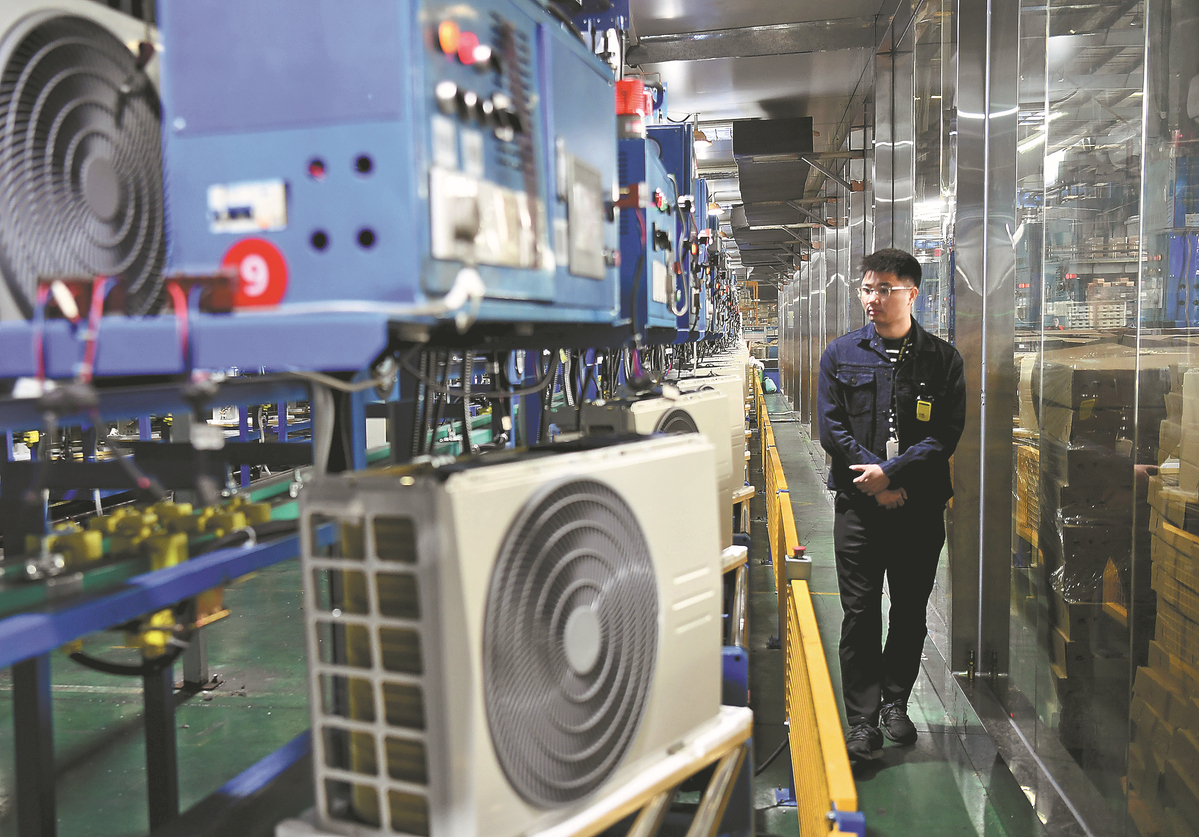Private sector demand key to full recovery


Expert: Q1 growth data indicates more substantial policy support needed
Economic growth data for the first quarter shows that most parts of China have registered an annual growth pace higher than the national level. However, more substantial policy support is needed to boost demand from the private sector, as overall economic recovery still faces mixed challenges caused by sluggish domestic demand, experts said.
Their comments came after 31 provinces and regions in China recently unveiled their GDP growth data for the first quarter. Year-on-year growth of 23 provinces and regions in the first quarter outpaced the national level of 4.5 percent, while the other eight fell behind.
Zhang Bin, deputy director of the Institute of World Economics and Politics at the Chinese Academy of Social Sciences, said on Monday that the different bases provinces and regions were coming off last year was the primary factor behind the geographical inconsistencies in the recovery.
The new data also indicates that the recovery is faced with challenges, and policy support is needed to boost the private sector's demand to energize growth.
For the first quarter, the growth rate of Northeast China's Jilin province and Southwest China's Tibet autonomous region both came in at 8.2 percent year-on-year, the fastest among all 31 provinces and regions. East China's Jiangxi and Fujian provinces registered the lowest year-on-year growth rate of 1.2 percent and 1.7 percent, respectively.
"From January to March, the economy widely rebounded mainly because of recovering economic activities thanks to the optimization of pandemic containment policies," Zhang said. "For the first quarter data, last year's base effects also played a significant role. Growth in most regions is prominent due to their low base last year. Regions whose growth pace missed the national 4.5 percent level mostly experienced a high growth rate for the first quarter last year."
For example, the GDP of the provinces in Northeast China Jilin, Heilongjiang and Liaoning grew 8.2 percent, 5.1 percent and 4.7 percent, respectively, outpacing the national average. Last year, an intense round of COVID-19 hit the region hard, and Jilin saw negative growth for the first three months of 2022.
Jiangxi's small economic growth of 1.2 percent in the first quarter of this year can be compared with 6.9 percent growth for the same period last year, the second fastest in the country.
Aside from the base effect, Zhang said the quarterly data indicates the economy is experiencing a mixed recovery. On one hand, growth is widely regaining momentum with offline activities, particularly tourism, up and running. On the other, sluggish domestic demand is creating caution, evidenced by lackluster investment and consumption from the private sector and a faltering job market.
"Sluggish demand will remain the primary challenge for this year. Government-backed lending took up 60 to 70 percent of the 14.53-trillion-yuan ($2.1 trillion) newly added social financing for the first quarter, indicating that the private sector's demand needs to be further stimulated," he said.
A meeting of the Political Bureau of the Communist Party of China Central Committee on Friday, which analyzed the current economic situation, stressed that restoring and expanding demand is the key to consistent economic recovery. The current economic improvement is mainly restorative, with the driving force from within still weak and demand insufficient. Proactive fiscal policy should be stepped up, while prudent monetary policy should be targeted and effective so that they work together to boost demand, the meeting participants added.
Figures from the National Bureau of Statistics released on Sunday showed that the official purchasing managers index for China's manufacturing sector stood at 49.2 in April, down from 51.9 in March, and below the 50-point mark that separates growth from contraction.
"Yet we've noticed that the structure of the manufacturing sector is noticeably improving and leaning toward high quality. For example, the profits of manufacturers that center on new energy and new materials have grown rapidly in the first quarter," said Su Jingchun, an associate researcher at the Chinese Academy of Fiscal Sciences.
Overall, policy incentives such as continued financial support are needed for manufacturing to keep growth stable and to ensure the economy is on track to grow in line with this year's target, she added.




































